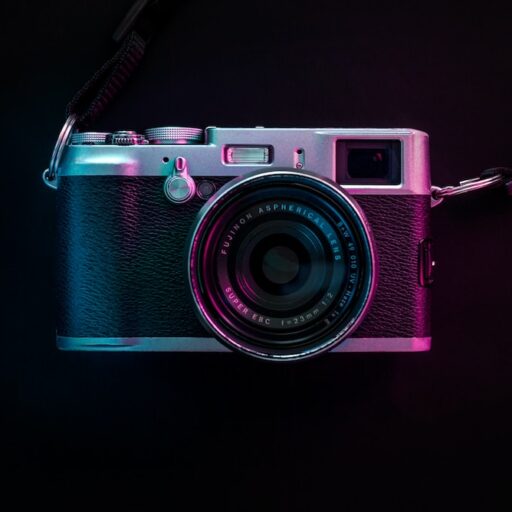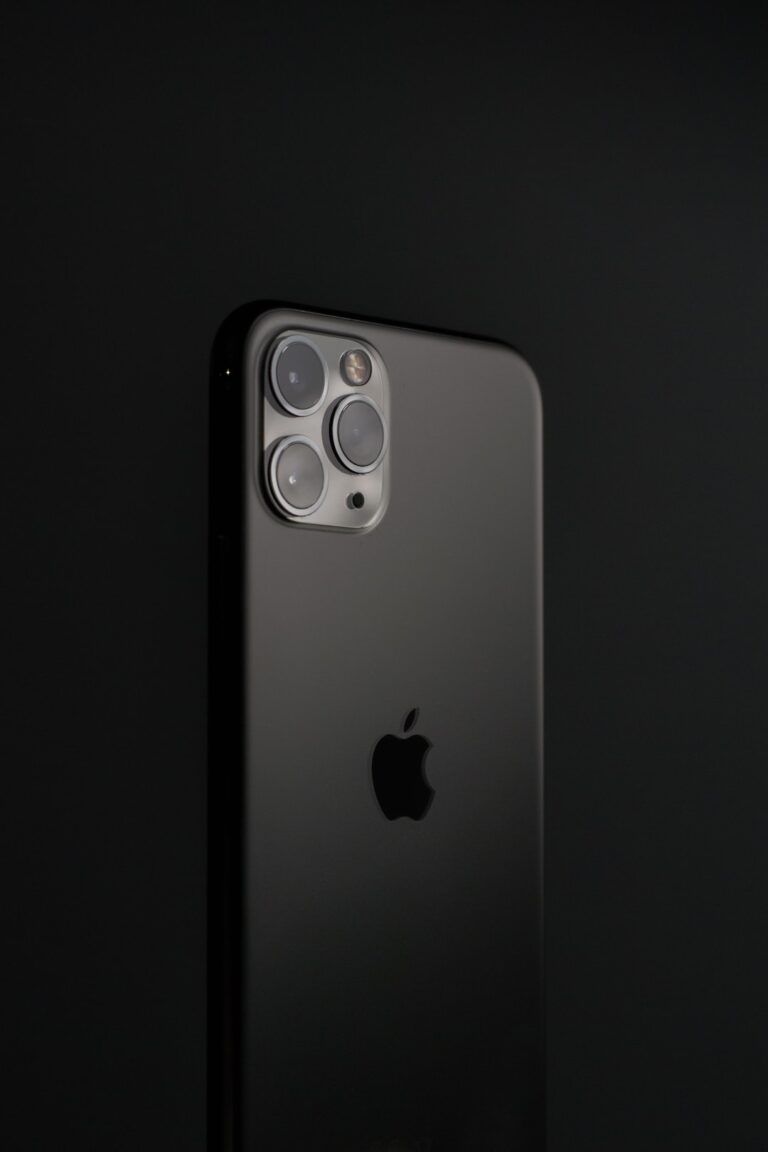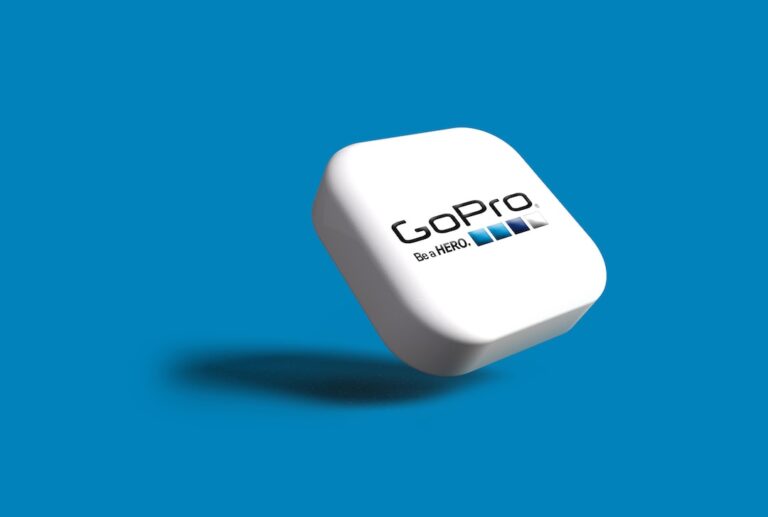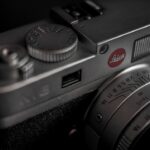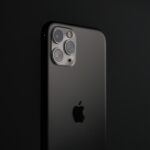Support our educational content for free when you purchase through links on our site. Learn more
Which Camera Brand Do Most Professional Photographers Use in 2025? 📸
Ever wondered which camera brand dominates the bags of professional photographers worldwide? Spoiler alert: it’s not as straightforward as you might think! While Nikon leads the pack among pros, Canon still rules the hearts of amateurs, and Sony’s mirrorless marvels are stealing the spotlight with the most popular individual camera model. In this article, we dive deep into the data, dissect the pros and cons of mirrorless vs. DSLR systems, and reveal why lens ecosystems and personal workflow often trump brand loyalty. Plus, we’ll share insider tips from our Camera Brands™ experts to help you choose the perfect gear for your creative journey.
Did you know that over 60% of professional photographers have switched to mirrorless cameras, yet many still cling to their trusty DSLRs because of lens selection? Keep reading to discover which brands and models are truly shaping professional photography in 2025—and which might be the best fit for you.
Key Takeaways
- Nikon is currently the most popular camera brand among professional photographers, favored for its robust build and excellent image quality.
- Canon remains the top choice for amateur photographers, thanks to its user-friendly design and color science.
- Sony’s mirrorless Alpha series, especially the a7 III, is the most popular individual camera model among pros, blending cutting-edge autofocus and video capabilities.
- Mirrorless cameras dominate the professional market (63%), but DSLRs still hold strong due to superior lens ecosystems and battery life.
- Lens selection, ergonomics, and reliability often matter more than brand name alone when pros choose their gear.
- Explore our expert Camera Buying Guide to find the best camera system tailored to your style.
👉 Shop Professional Cameras and Brands:
Table of Contents
- ⚡️ Quick Tips and Facts
- 📸 The Evolution of Professional Photography Gear: A Historical Lens
- Mirrorless vs. DSLR: The Great Debate Among Pros and Enthusiasts
- The Reigning Champions: Top Camera Brands Among Professional Photographers
- 1. Canon: A Legacy of Professional Trust and Innovation
- 2. Nikon: The Professional’s Workhorse and Storyteller’s Choice
- 3. Sony: The Disruptor’s Rise in Professional Circles with Alpha Power
- 4. Fujifilm: The Stylish Choice for Discerning Professionals and Creatives
- 5. Other Contenders: Leica, Panasonic, and the Niche Market Maestros
- Beyond the Brand: What Truly Matters to Professional Photographers?
- Lens Ecosystem: The Unsung Hero of Professional Photography
- Ergonomics and Build Quality: Surviving the Grind of Professional Shoots
- Image Quality and Sensor Performance: The Core of the Craft
- Autofocus Speed and Accuracy: Capturing the Decisive Moment
- Video Capabilities: A Growing Demand in the Modern Professional Workflow
- Reliability and Customer Support: Peace of Mind for the Working Pro
- Understanding the Data: How We Gauge Professional Preferences and Market Trends
- Conclusion: Your Next Professional Camera Journey Starts Here
- 🔗 Recommended Links: Dive Deeper into Professional Camera Gear!
- ❓ FAQ: Your Burning Questions About Professional Camera Brands Answered
- 📚 Reference Links: Our Sources and Further Reading
Alright, team, let’s get into it! You’ve asked the million-dollar question, the one that sparks endless debates in forums and fuels our late-night coffee-fueled discussions here at Camera Brands™. So, what camera brand do professionals use? The answer is a bit like asking a master chef for their favorite knife—it’s complicated, personal, and oh-so-revealing. Let’s slice into it!
⚡️ Quick Tips and Facts
In a hurry? Here’s the snapshot. We’ll unpack all this juicy info below, but for those who need the intel now, here you go:
- The Big Three Still Reign: The professional photography landscape is largely dominated by three titans: Nikon, Canon, and Sony.
- Nikon Edges Ahead for Pros: Surprise! According to a comprehensive survey, Nikon is the most popular camera brand among professional photographers, with about 31% of the pro market share. We were expecting Canon to take the top spot, but the numbers don’t lie!
- Canon is King with Amateurs: While Nikon has the pro vote, Canon is the most popular brand for amateur photographers, capturing 27% of that audience.
- Mirrorless is the New Standard: The tide has turned! A whopping 63% of professional photographers now use mirrorless cameras as their primary work tool, compared to just 36% sticking with DSLRs.
- The Most Popular Pro Camera is… a Sony! In a fascinating twist, despite Nikon’s overall brand popularity, the single most popular camera model for pros is the Sony a7 III.
- DSLRs Aren’t Dead: Don’t count the old workhorses out! The 8-year-old Nikon D750 is still one of the most used cameras by pros, proving that “professional photographers aren’t afraid to continue using older technology as long as it still performs adequately.”
- It’s About the System, Not Just the Body: The number one reason pros stick with DSLRs? Their superior lens selection and the high cost of switching systems.
📸 The Evolution of Professional Photography Gear: A Historical Lens
Remember the clunky, glorious days of film? We do! The transition from darkrooms to digital workflows was a seismic shift, and for years, the professional world was a two-horse race. You were either in the Canon camp or the Nikon camp. The “DSLR wars” were legendary, with each new release from one brand prompting a swift and powerful response from the other. Models like the Canon EOS-1D series and the Nikon D-series became the gold standard for photojournalists, sports photographers, and studio pros.
Then, a disruptor entered the scene. Sony, with its aggressive push into full-frame mirrorless technology, completely changed the game. They offered compact bodies packed with groundbreaking features like incredible eye-autofocus and high-resolution sensors. Initially dismissed by some traditionalists, the advantages quickly became undeniable. Now, we’re in a new era where mirrorless cameras are not just an alternative but, for many, the preferred choice. This has forced legacy brands like Canon and Nikon to play catch-up, leading to some of the most innovative cameras we’ve ever seen, like the Nikon Z8 and the Canon EOS R5 Mark II.
Mirrorless vs. DSLR: The Great Debate Among Pros and Enthusiasts
The battle between mirrorless and DSLR cameras is one of the hottest topics in our Camera Comparisons category. It’s not just about technology; it’s about philosophy, feel, and function. Let’s break down why different photographers choose their champion.
Why Professionals Are Leaning Towards Mirrorless Systems
It’s clear that mirrorless is winning the popularity contest among pros, and for good reason. The technology offers tangible benefits that directly impact a professional’s workflow.
- ✅ Size and Weight: This is the big one. When you’re hauling gear for a 12-hour wedding, every ounce counts. Mirrorless bodies are generally smaller and lighter.
- ✅ Superior Autofocus: This is a game-changer. As one wedding photographer noted, mirrorless eye-tracking is revolutionary. He found that “Where the D850 got 1/3 images in focus during low light conditions, the Z6 hit focus perfectly 9/10 times.” That’s the difference between a usable shot and a missed moment.
- ✅ What You See Is What You Get (WYSIWYG): The Electronic Viewfinder (EVF) shows you a real-time preview of your exposure, white balance, and depth of field. No more guessing and chimping (checking your screen after every shot).
- ✅ Silent Shooting: For wedding ceremonies, wildlife photography, or quiet film sets, a completely silent shutter is an absolute blessing.
- ✅ In-Body Image Stabilization (IBIS): Having stabilization built into the camera body means any lens you attach, even old manual ones, becomes stabilized. This allows for sharper handheld shots at slower shutter speeds.
- ✅ Video Prowess: Mirrorless cameras are generally better for shooting video, offering features like faster sensor readouts and more advanced video-centric autofocus.
The Enduring Appeal of DSLRs for Specific Professional Niches
So, if mirrorless is so great, why are over a third of pros still clinging to their DSLRs? It’s not just about being old-fashioned. DSLRs still offer some serious advantages.
- ✅ Massive Lens Selection: This is the number one reason pros stick with DSLRs. Decades of lens development for Canon’s EF and Nikon’s F mounts mean there’s a vast, mature, and often more affordable selection of glass available.
- ✅ Optical Viewfinder (OVF): Some photographers simply prefer the clear, lag-free, through-the-lens view of an OVF. It doesn’t use battery power and provides a direct connection to the scene without any digital interface.
- ✅ Battery Life: Without the need to power an EVF or a rear LCD screen constantly, DSLRs generally boast superior battery life—a crucial factor on long shoot days.
- ✅ Robustness and Ergonomics: Many pros feel that flagship DSLRs like the Canon EOS-1D X Mark III are built like tanks and offer a more substantial grip and balance, especially with large telephoto lenses.
- ❌ Cost of Switching: For a professional with a huge investment in DSLR lenses, the cost to switch to a new mirrorless system is prohibitively high.
Amateur Photographers: Following the Mirrorless Trend?
Yes, they are! Over half of amateur photographers (54%) have also made the jump to mirrorless. The reasons are largely the same as for professionals:
- Portability: Smaller and lighter gear is more fun to carry around on vacation or a day out.
- Helpful Technology: Features like the EVF’s exposure preview and advanced autofocus help amateurs learn faster and get better results right out of the camera.
- In-Body Stabilization: IBIS is a huge help for getting sharp, non-blurry photos, especially in low light, without needing a tripod.
When Amateurs Still Opt for DSLRs: Lens Selection and Familiarity
The reasons for amateurs to stick with DSLRs mirror those of the pros, with a strong emphasis on value and the existing market.
- Cost-Effectiveness: As a whole, “DSLRs are also on the whole cheaper than mirrorless cameras.” The used market for DSLR bodies and lenses is enormous, offering an affordable entry point into serious photography.
- Lens Availability: Just like the pros, amateurs appreciate the vast and affordable selection of lenses available for DSLR mounts.
- Preference for OVF: A small but significant portion of amateurs (around 6%) simply prefer the traditional optical viewfinder experience.
The Reigning Champions: Top Camera Brands Among Professional Photographers
Okay, let’s get to the main event. Which Camera Brands are sitting at the top of the professional food chain? Based on surveys and what we see in the field, it’s a tight race.
1. Canon: A Legacy of Professional Trust and Innovation
While they may have been pipped by Nikon for the top spot among pros in a recent survey (28% market share), Canon’s legacy is undeniable. For decades, their white L-series lenses have been a fixture on the sidelines of every major sporting event. Their color science is beloved by portrait and wedding photographers, and their user-friendly ergonomics make their cameras a joy to use.
Canon’s pivot to the mirrorless RF mount was a massive success. They’ve produced some of the most compelling professional cameras on the market, blending their traditional strengths with cutting-edge technology.
Iconic Canon Gear Favored by Pros: From EOS R to Cinema EOS
- Canon EOS R5 Mark II: Hailed as arguably the best hybrid camera available, it’s a beast for both high-resolution stills (45MP) and 8K video. TechRadar notes, “The Mark II is a camera that genuinely makes pro photography easier.”
- Canon EOS R6: A favorite among wedding photographers for its incredible low-light performance and manageable 20MP file sizes. It’s a true workhorse that balances performance and price perfectly.
- Canon EOS-1D X Mark III: The pinnacle of professional DSLRs. It’s a rugged, lightning-fast camera built for the most demanding action photography scenarios.
👉 Shop Canon on:
- Canon EOS R5 Mark II: Amazon | Walmart | Canon Official Website
- Canon EOS R6: Amazon | Walmart | Canon Official Website
2. Nikon: The Professional’s Workhorse and Storyteller’s Choice
Holding the top spot with 31% of the professional market, Nikon has a fiercely loyal following. Known for their incredible build quality, outstanding ergonomics, and phenomenal image quality, Nikon cameras have been trusted by photojournalists and landscape photographers for generations. Their transition to the mirrorless Z-mount was initially slower than Canon’s, but they’ve hit their stride with some truly class-leading cameras.
Nikon’s Pro-Grade Offerings: Z-Series Mirrorless and F-Mount Legends
- Nikon Z8: TechRadar calls this the “Best Professional Camera Overall.” It packs the power of the flagship Z9 into a smaller, more accessible body, offering a stunning 45.7MP sensor and incredible autofocus.
- Nikon Z6 II: A top recommendation for wedding photography. Its 24MP full-frame sensor is described as the “perfect resolution” for events, providing amazing low-light performance without creating massive, workflow-clogging files.
- Nikon D850: This 45.7MP DSLR is a living legend. It’s still incredibly popular with both pros and amateurs for its exceptional image quality, robust build, and fantastic battery life. It’s a testament to the fact that a great camera is a great camera, regardless of its age.
👉 Shop Nikon on:
- Nikon Z8: Amazon | Walmart | Nikon Official Website
- Nikon D850: Amazon | Walmart | Nikon Official Website
3. Sony: The Disruptor’s Rise in Professional Circles with Alpha Power
Sony’s story is one of incredible innovation. They essentially created the full-frame mirrorless market and now hold a solid 20% of the professional market share. They are the brand for photographers who crave the latest and greatest technology, especially when it comes to autofocus, video features, and sensor resolution. The debate between the big brands is fierce, and as the first YouTube video embedded in this article, “Canon vs Sony in 2025 | Which Camera Brand Better?”, explores, choosing between them often comes down to specific needs and priorities.
Sony’s Alpha Series: A Professional Darling for Speed and Innovation
- Sony a7 III: The single most popular camera for professionals. It hit the sweet spot of performance, features, and price when it was released and remains an incredibly capable tool for all types of photography.
- Sony A7R V: For the professional who needs maximum detail, this is the king. With a “class-leading resolution” of 61MP, it’s a dream for landscape, commercial, and studio photographers.
- Sony A9 III: A camera that redefines speed. Its groundbreaking global shutter allows for an insane 120fps burst shooting, making it the ultimate choice for professional sports and action photographers.
- Sony a7 IV: A fantastic hybrid option, especially recommended for those who do a lot of professional video work alongside their stills.
👉 Shop Sony on:
- Sony a7 III: Amazon | Walmart | Sony Official Website
- Sony A7R V: Amazon | Walmart | Sony Official Website
4. Fujifilm: The Stylish Choice for Discerning Professionals and Creatives
Fujifilm has carved out a beloved niche in the professional market, holding around 12% of the pro share. They march to the beat of their own drum, focusing on APS-C and medium format sensors. Pros love Fujifilm for its tactile, retro-inspired controls, beautiful aesthetics, and, most importantly, its legendary color science and film simulations.
Fujifilm’s X-Series and GFX in Professional Hands: Beyond the Retro Charm
- Fujifilm X-T3: This camera is a superstar, proving incredibly popular with both pros and amateurs. It’s a testament to how capable modern APS-C sensors are, offering professional performance in a compact and enjoyable package.
- Fujifilm GFX100 II: A medium-format monster that is surprisingly fast and versatile. For professionals in fashion, commercial, and fine art photography, the 102MP of detail it provides is simply breathtaking.
👉 Shop Fujifilm on:
- Fujifilm X-T3: Amazon | Walmart | Fujifilm Official Website
- Fujifilm GFX100 II: Amazon | Walmart | Fujifilm Official Website
5. Other Contenders: Leica, Panasonic, and the Niche Market Maestros
Beyond the big four, several other brands serve specific professional needs with excellence.
- Leica: The choice for discerning street photographers and photojournalists, with cameras like the Leica M11-P offering incredible build quality and a unique rangefinder shooting experience.
- Panasonic: A powerhouse in the video world, their Lumix line, particularly the Panasonic Lumix S series, is highly respected by hybrid shooters and cinematographers.
- Hasselblad: A legendary name in medium format, the Hasselblad X2D 100C is a purist’s tool for achieving the absolute pinnacle of image quality, especially in studio and portrait work.
- OM System (formerly Olympus): Champions of the Micro Four Thirds system, they offer incredibly compact, weather-sealed cameras like the OM-1 II, which excels in wildlife photography thanks to its portability and computational features.
Beyond the Brand: What Truly Matters to Professional Photographers?
Here’s the secret sauce, the advice we give everyone who walks through our doors: the name on the camera is the least important part of the equation. A true professional can create stunning images with almost any modern camera. What really matters is the system and how it serves their specific needs. This is the core of our Camera Buying Guide.
Lens Ecosystem: The Unsung Hero of Professional Photography
You date the camera body, but you marry the lens system. Lenses are a long-term investment that will likely outlast several camera bodies. A brand’s strength is often defined by the breadth, quality, and availability of its native lenses. This is a key part of understanding Camera Features. Canon’s RF L-series, Nikon’s Z S-Line, and Sony’s G Master lenses are all phenomenal, but they each have different strengths and specialties.
Ergonomics and Build Quality: Surviving the Grind of Professional Shoots
A professional camera is a tool, and it needs to feel like an extension of your hand. How does the grip feel? Are the buttons and dials customizable and intuitively placed? Can it withstand rain, dust, and the occasional knock? This is where personal preference reigns supreme. What feels perfect to one photographer might feel awkward to another.
Image Quality and Sensor Performance: The Core of the Craft
At the end of the day, it’s all about the final image. Professionals scrutinize a camera’s sensor performance.
- Resolution: How many megapixels do you really need? A wedding photographer might prefer the 24MP of a Nikon Z6 II for manageable files, while a landscape artist will crave the 61MP of a Sony A7R V.
- Low-Light Performance: How clean are the images at high ISOs? For event and wedding photographers working in dark venues, this is a non-negotiable priority.
- Dynamic Range: How much detail can be recovered from the shadows and highlights in post-processing? This is crucial for landscape photographers dealing with high-contrast scenes.
Autofocus Speed and Accuracy: Capturing the Decisive Moment
For sports, wildlife, and portrait photographers, the autofocus system is paramount. Modern mirrorless cameras with their AI-powered subject and eye-tracking have completely revolutionized this aspect of photography. The ability to trust your camera to nail focus on a moving subject’s eye, time after time, is a massive advantage.
Video Capabilities: A Growing Demand in the Modern Professional Workflow
The line between photographer and videographer is blurrier than ever. Many clients now expect video as part of a standard package. Professionals need cameras that are just as capable of capturing cinematic 4K (or even 8K) video as they are at taking stills. This is where hybrid cameras like the Canon EOS R5 Mark II and Sony a7 IV truly shine.
Reliability and Customer Support: Peace of Mind for the Working Pro
When your livelihood depends on your gear, it simply has to work. Professionals rely on brands that have a proven track record of reliability. And when things do go wrong, access to fast, professional repair services (like Canon Professional Services or Nikon Professional Services) is absolutely essential to minimize downtime.
Understanding the Data: How We Gauge Professional Preferences and Market Trends
So, where does all this information come from? Our insights are a blend of our team’s decades of in-the-field experience and hard data from market analysis and comprehensive user surveys, like the excellent one conducted by Shotkit. These surveys poll thousands of professional and amateur photographers about the specific gear they use for their paid work and personal projects. This provides a valuable, real-world snapshot of what’s actually in the camera bags of working pros, going beyond marketing hype to reveal true user preferences. It’s important to remember that these trends are always shifting as new technology emerges, which is why we’re constantly updating our Camera Guides.
Conclusion: Your Next Professional Camera Journey Starts Here
So, which camera brand is used by most professional photographers? The answer is delightfully nuanced. Nikon currently holds a slight edge among pros, thanks to its robust DSLR heritage and exciting mirrorless innovations. Canon remains a powerhouse, beloved for its ergonomic designs and color science, especially among amateurs and many pros. Meanwhile, Sony has surged ahead with its mirrorless Alpha series, dominating the most popular individual camera model charts with the a7 III and pushing the boundaries of autofocus and sensor technology.
Mirrorless cameras have clearly taken the professional world by storm, favored for their compact size, silent shooting, and cutting-edge autofocus. Yet, DSLRs still hold their ground due to their unmatched lens ecosystems, battery life, and ruggedness. The choice ultimately boils down to your personal workflow, lens investments, and shooting style.
At Camera Brands™, we recommend evaluating your priorities carefully:
- If you want the latest tech and superb video features, Sony’s mirrorless lineup is a fantastic choice.
- If you value a vast lens selection and tried-and-true reliability, Nikon’s DSLRs and Z-series mirrorless cameras are hard to beat.
- For those who want a blend of tradition and innovation, Canon’s RF mirrorless system offers a compelling middle ground.
Remember, the best camera is the one that feels like an extension of your creative vision, not just the one with the highest specs. As we teased earlier, the “most popular” brand might not be the best for your unique needs — so take your time, test gear if you can, and invest in lenses that will serve you for years.
Ready to dive deeper? Check out our Camera Buying Guide and Camera Comparisons for expert advice tailored to your style.
🔗 Recommended Links: Dive Deeper into Professional Camera Gear!
👉 Shop Top Professional Cameras and Brands:
- Canon EOS R5 Mark II: Amazon | Walmart | Canon Official Website
- Canon EOS R6: Amazon | Walmart | Canon Official Website
- Nikon Z8: Amazon | Walmart | Nikon Official Website
- Nikon D850: Amazon | Walmart | Nikon Official Website
- Sony a7 III: Amazon | Walmart | Sony Official Website
- Sony A7R V: Amazon | Walmart | Sony Official Website
- Fujifilm X-T3: Amazon | Walmart | Fujifilm Official Website
- Fujifilm GFX100 II: Amazon | Walmart | Fujifilm Official Website
Recommended Books on Professional Photography:
- “Understanding Exposure” by Bryan Peterson — A must-read for mastering light and camera settings.
- “The Digital Photography Book” by Scott Kelby — Practical tips from a pro’s perspective.
- “The Photographer’s Eye” by Michael Freeman — Dive into composition and visual storytelling.
❓ FAQ: Your Burning Questions About Professional Camera Brands Answered
What camera brands do professional photographers prefer?
Professional photographers primarily prefer Nikon, Canon, and Sony. Nikon leads slightly among pros due to its robust DSLR lineage and increasingly competitive mirrorless offerings. Canon remains hugely popular for its ergonomic design and color science, especially among amateurs and many pros. Sony is the go-to for cutting-edge mirrorless technology, especially for those prioritizing autofocus and video. Fujifilm and Leica serve niche markets with their unique sensor formats and design philosophies. Ultimately, the choice depends on the photographer’s specialty, budget, and personal preferences.
Read more about “Is Canon Better Than Nikon? 12 Key Insights for 2025 📸”
Why do professionals choose Canon or Nikon cameras?
Professionals choose Canon or Nikon because of their extensive lens ecosystems, reliable build quality, and proven performance. Both brands have decades of experience crafting cameras and lenses tailored to demanding professional workflows. Canon’s color science and user-friendly ergonomics appeal to many portrait and wedding photographers, while Nikon’s ruggedness and image quality attract photojournalists and landscape artists. Additionally, both brands offer excellent professional support services, which is crucial for working pros.
Read more about “10 Best Nikon Cameras to Capture Every Moment in 2025 📸”
Are mirrorless cameras better for professional photography?
Mirrorless cameras offer many advantages for professionals, including smaller size, lighter weight, advanced autofocus systems, silent shooting, and better video capabilities. These features make mirrorless cameras ideal for fast-paced environments like weddings, sports, and wildlife photography. However, DSLRs still hold value for their optical viewfinders, battery life, and vast lens selections. Mirrorless is generally the future, but DSLRs remain relevant depending on the photographer’s needs.
Read more about “Top 8 Camera Companies in the World for Capturing Moments (2025) 📸”
What features should a camera have for professional use?
A professional camera should have:
- Robust build quality with weather sealing to withstand tough conditions.
- High-quality sensor with excellent dynamic range and low-light performance.
- Fast and accurate autofocus, including eye and subject tracking.
- Extensive lens compatibility or a strong native lens lineup.
- Good ergonomics for comfortable handling during long shoots.
- Reliable battery life to last through demanding sessions.
- Advanced video features if hybrid shooting is required.
- Access to professional support and repair services.
Read more about “What Is the #1 Camera Brand? Top 6 Revealed for 2025 📸”
How important is lens selection for professionals?
Lens selection is critical. Lenses often define the creative possibilities more than the camera body. Professionals invest heavily in high-quality lenses because they last longer and have a bigger impact on image quality. A brand’s lens ecosystem can make or break the decision to switch systems.
Read more about “📸 9 Pro Camera Brands: Your 2025 Gear Guide!”
Can older DSLR models still compete with modern mirrorless cameras?
Absolutely! Cameras like the Nikon D750 and Canon 5D Mark IV remain in active professional use because they deliver excellent image quality and reliability. While mirrorless cameras offer newer tech, many pros value the proven performance and familiar ergonomics of older DSLRs.
Read more about “What Brand Is Best for Digital Cameras? Top 10 Picks (2025) 📸”
📚 Reference Links: Our Sources and Further Reading
- Shotkit Camera Survey 2023 — Comprehensive data on professional and amateur camera usage.
- Zach Nicholz: Top Cameras for Wedding Photography — Expert insights on wedding gear.
- TechRadar: Best Professional Camera 2025 — In-depth reviews of the 14 best professional cameras.
- Canon Official Website
- Nikon Official Website
- Sony Official Website
- Fujifilm Official Website
- Leica Official Website
- Panasonic Lumix Official
And there you have it! Whether you’re a seasoned pro or an aspiring enthusiast, the camera world is rich with options tailored to your vision. Remember, the best camera brand is the one that empowers you to capture your moments with confidence and creativity. Happy shooting! 📷✨
